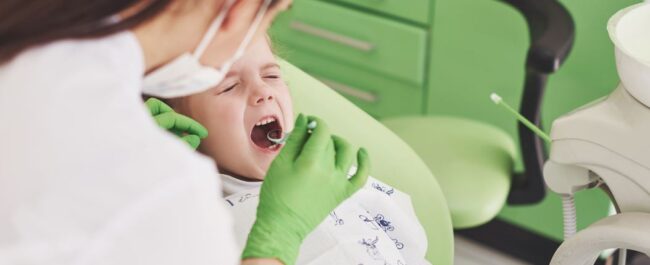Can Sedation be used for Kids at the Dentist
Visiting the dentist can be a very nerve-wracking experience especially for children who may not know what to expect from their visit, or those who need a fair amount of work done. Children who aren’t used to visiting the dentist might need a bit of assistance in calming their nerves, which is where sedation dentistry comes in. While using sedation might feel extreme or concerning for some parents, it’s actually a very common practice at most dental offices. Thankfully, there are some safe ways to incorporate sedation that can help reduce anxiety and put a child’s fears at ease.
What is Sedation Dentistry?
Sedation dentistry, or sleep dentistry, is the practice of using medications to help relax dental patients during their visit. Often used during more involved procedures, sedation can also be used anytime a patient may feel anxious or fearful while at the dentist.
Some dentists will use light sedatives to help calm their young patients. This helps them to manage anxiety, fear and the unique needs of their patients. A dentist may also use sedation in cases where they plan to do several procedures at once, if the child has a strong ‘gag’ reflex, or if they are worried about the safety of the child they are working on. If a child struggles with sitting still or allowing a dentist to get into their mouth, it may be safer to use sedation in order to complete their exam. Children on the autism spectrum or with any level of neurodivergence may be even more susceptible to anxiety and fear.
Although sedation can help calm the patient for their procedure, it’s important to note that these medications won’t reduce any pain or discomfort. The dentist will use different medications to help control these as needed.
Is sedation safe for a child?
Although there are always cautions to keep in mind any time a child is set to undergo a procedure that involves sedation, it is actually a very safe process. Dentists are highly trained in the administration of sedation, so they will ensure that the process is completed safely. Ultimately, the use of sedation can help reduce the risks involved with performing dental work on a child that is jumpy, fearful or anxious.
Types of sedation used on children
There are three common kinds of sedation that can be used on children, including:
Oral sedation – Administered by mouth in pill form, this form of sedation is often better for older children that are able to ingest a pill with ease. An oral sedative will not put a child to sleep, however it will help them to relax.
Nitrous oxide or laughing gas – This is one of the most common and least invasive forms of sedation for children and adults alike. Using a face mask, patients breathe in this gas with a blend of oxygen. It will help the patient feel more relaxed and possibly a little lightheaded and silly. Some children don’t like this feeling however, so it’s a good idea to have a second option available.
General anesthesia – For more involved procedures, it’s not uncommon for general anesthesia to be recommended. This sedation will have the patient asleep during the entire process so is a great choice in certain situations. General anesthesia must be administered by specially-trained medical staff, so not all dental offices will be able to offer this kind of sedation.
Sedation dentistry is a great way to calm anxious children
Although using sedation may feel like an unusual choice, it can actually be quite beneficial for many children. The ability to reduce anxiety, encourage calmness and help a child feel more at ease in the dentist chair will help the visit go more smoothly, and make them more willing to return for their next checkup. Children should visit the dentist every 6 months for regular cleanings and checkups, so helping them feel comfortable doing so will make the process much easier on everyone involved.


